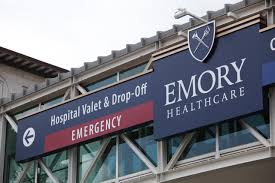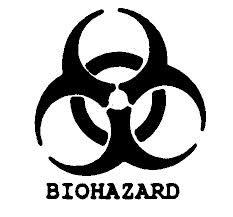Ebola Crisis Planning Includes Post-Crisis Measures – Analysis by Dr. Don Donahue
This is the first of two articles this week from Dr. Donald Donahue JR., DHEd, MBA, FACHE. Retired Lieutenant Colonel Donahue is as an Advisory Member to the American Academy of Disaster Medicine.
The American Academy of Disaster Medicine (AADM) is a unique volunteer organization dedicated to promoting and educating physicians and healthcare professionals concerning the critical importance of disaster medicine preparedness.
For Want of a Nail….
In the early days of World War II, Chief of Naval Operations Admiral E. J. King famously said “I don’t know what the hell this ‘logistics’ is that Marshall is always talking about, but I want some of it.” Seventy-two years on, that same urgent need permeates the American healthcare system as it responds to unprecedented challenges.
Much of the attention surrounding the treatment of medical staff exposed to Ebola has focused on isolation capabilities. This is appropriate — especially given the patently terrifying reputation of this deadly virus — but it is not sufficient. Experience has shown us that a laser focus on the immediate crisis can obscure the broader implications, revealing vulnerabilities in  response and recovery capabilities.
response and recovery capabilities.
Disposal of the regulated medical waste generated at Emory University Hospital in treating three Ebola patients illuminated the critical of a somewhat mundane process and the sometimes conflicting regulatory guidelines that complicate extraordinary operations. Planning often focuses on an expansion of routine operations and not on exceptional circumstances that may negate operational assumptions. This extends beyond addressing the aftermath of an incident.
Press coverage of the waste disposal issue stated “While U.S. hospitals may be prepared clinically to care for a patient with Ebola, Emory’s experience shows that logistically they are far from ready, biosafety experts said.” For the crisis planner, the operational words in this quote are “a patient.” Does a hospital that does not enjoy CDC as a neighbor have the resources to dispose of the waste generated by five, ten or twenty severely ill patients, whether the cause be Ebola, SARS, MERS or some yet to emerge contagion?
Similarly, planning for treating respiratory conditions typically involves projecting the need for additional ventilators to support the critically ill. Far less common are plans for increased delivery of oxygen to the facility (at a time when other  hospitals may also experience increased demand), maintenance and calibration of the machines themselves and the increased need for trained clinical staff to monitor this equipment. The number of isolation suites in U.S. hospitals is finite. Portable isolation units are available commercially, but investment in this expansion capability is generally precluded by fiscal constraints. Any one of these or myriad other factors can produce circumstances evocative of the proverb “for want of a nail…”
hospitals may also experience increased demand), maintenance and calibration of the machines themselves and the increased need for trained clinical staff to monitor this equipment. The number of isolation suites in U.S. hospitals is finite. Portable isolation units are available commercially, but investment in this expansion capability is generally precluded by fiscal constraints. Any one of these or myriad other factors can produce circumstances evocative of the proverb “for want of a nail…”
Risk analysis and contingency planning must consider end-to-end processes. This is not limited to the delivery of healthcare services. Who would have projected that construction in Denver would grind to a halt because of the impact of Hurricane Katrina on the Port of New Orleans? Only someone who recognized that New Orleans served as the gateway for shipment of concrete to the Great Plains.
This demands vision beyond the four walls of even the most advanced operation. A healthy dose of “what if” analysis can prevent sequential crises.
 “What should we do now?” “What should we say?”
“What should we do now?” “What should we say?”